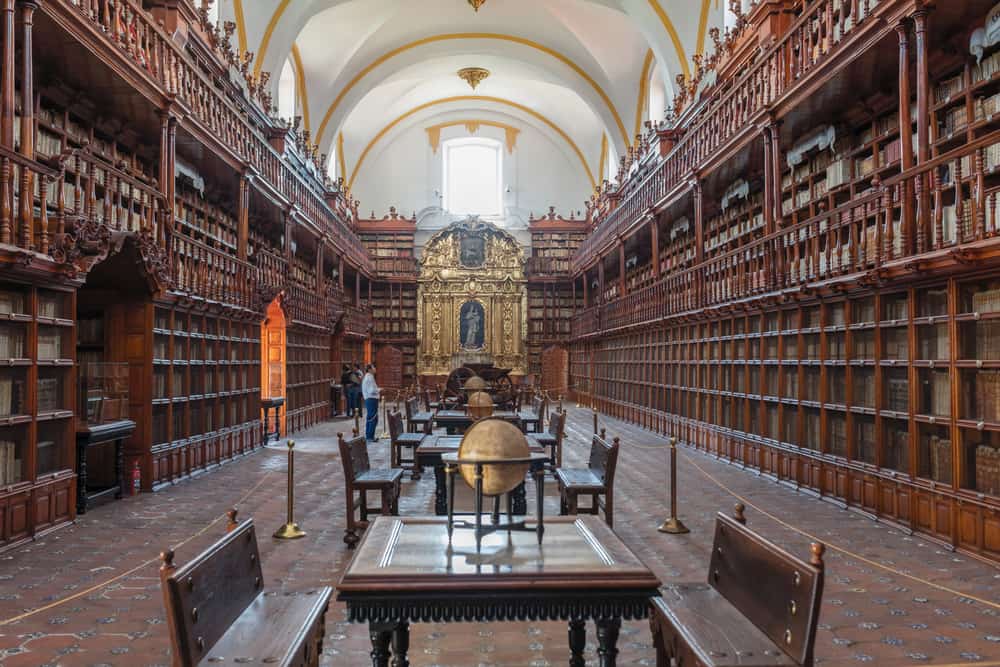Do you have an old library table in your house and want to know whether it could be antique? Are you considering buying one and want to know what to look for to ensure you get a genuine antique and pay a fair price?
Many people adore antique furniture and want to incorporate it into their homes. Library tables are especially useful due to their unique design and height. Read on to find out the answers to your questions and learn more about this fascinating item of historical furniture.
Table of Contents
What is a Library Table?
A library table is a piece of furniture designed to act as a convenient workspace for writing letters and other documents. According to Canonbury Antiques, the library table earned its name due to it typically being put in a private library belonging to an affluent gentleman.
The table may have built-in drawers to enable people to store small items such as pens, ink, paper, and other useful trinkets. The main difference between a library table and a regular table is the height; the former has a shorter knee height, whereas the latter is taller.
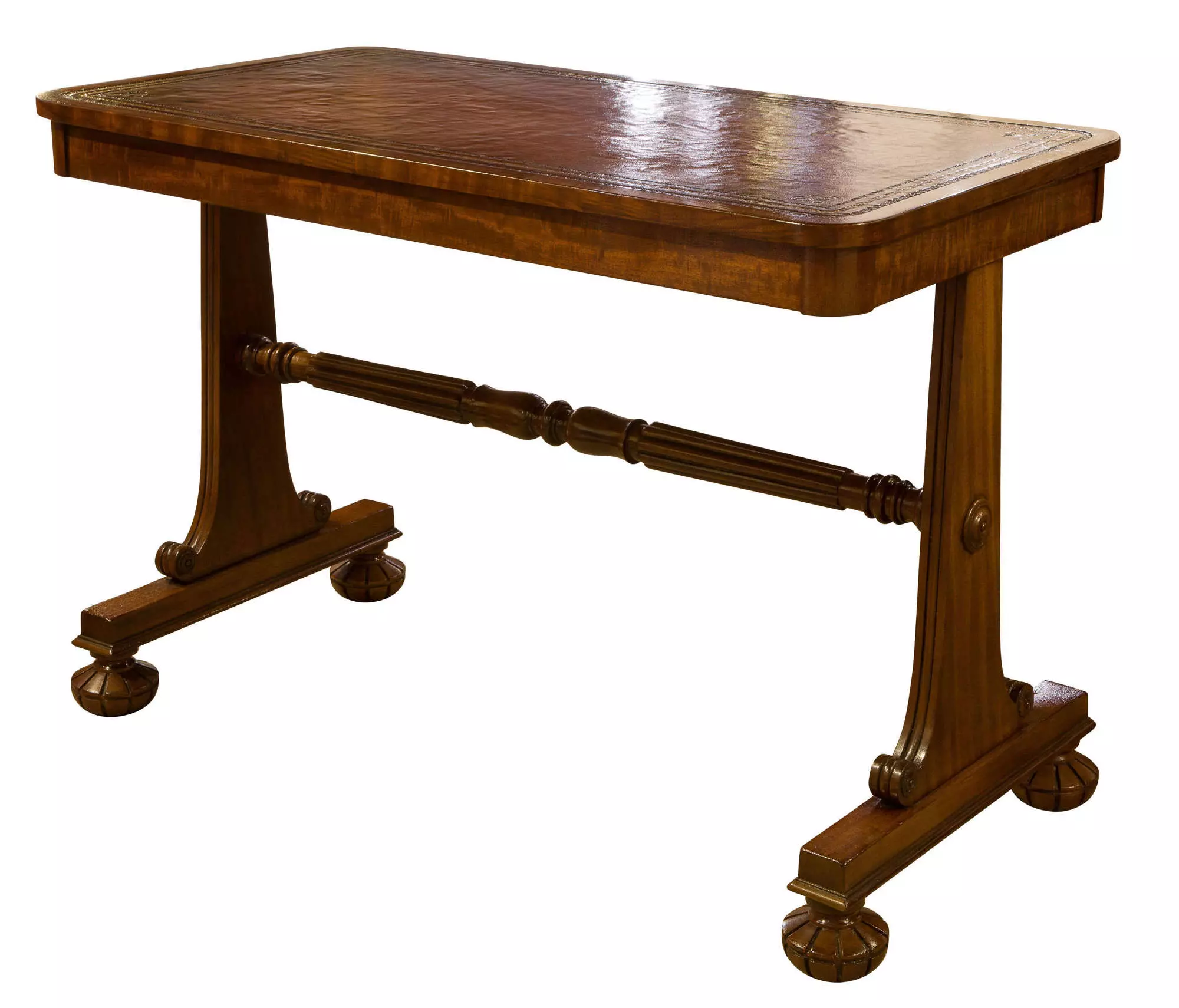
History of the Library Table
The library table has developed from different pieces of furniture over time to the modern desks we have today. The timeline of the history of the object has been sourced from Burrells Antique Desks, and runs as follows:
1600s
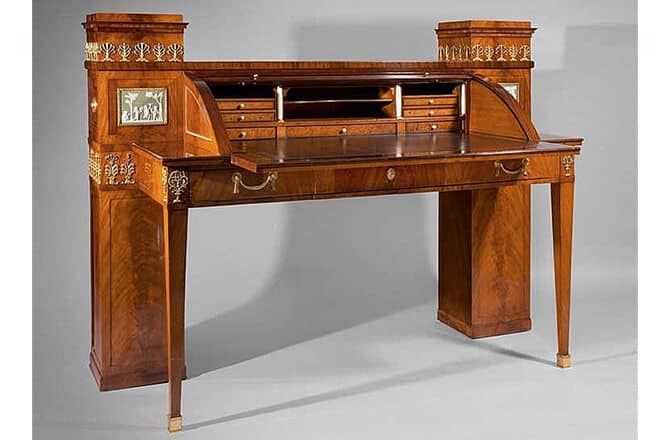
The bureau was invented and used as a desk and a storage space. The design was adapted from a classic chest of drawers and included a ‘writing slope’ that could be folded away when not in use.
1700s
The kneehole-writing table came into fashion during the reign of Queen Anne in 1702 and featured a small desk with drawers on either side of a kneehole. There were even some writing tables that had a central cupboard for extra storage.
They were typically made from oak or walnut, depending on the budget of the buyer, and were used predominately by ladies.
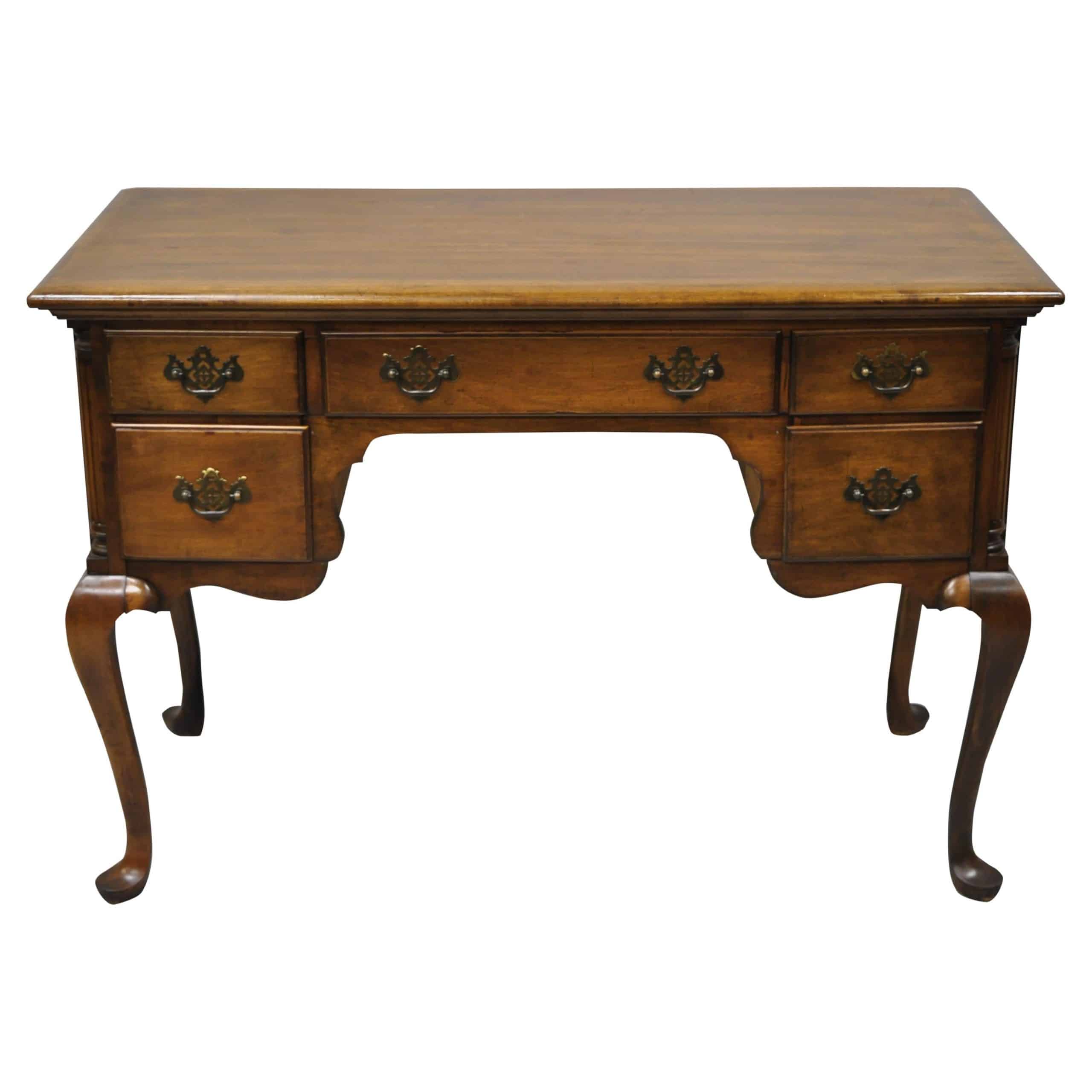
The 1700s also featured the rise of the pedestal and partners desk. These were made from the newly available Caribbean mahogany and designed by manufacturers such as Thomas Chippendale. These desks were ornate, large structures with intricate carved detailing.
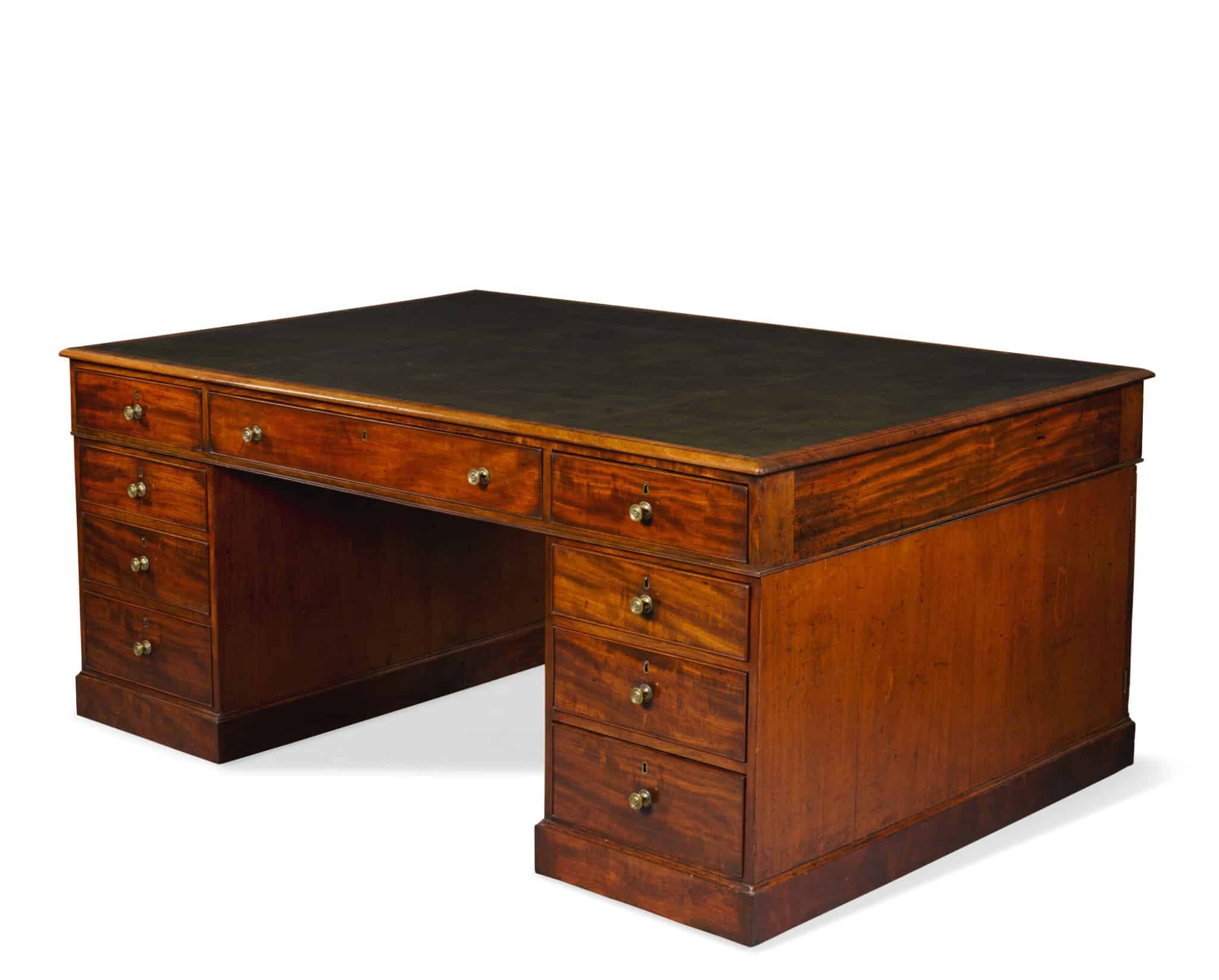
Some library tables even had marble tabletops for an added sense of luxury. The marble also made the table more durable and was a way for a family to show off their wealth.
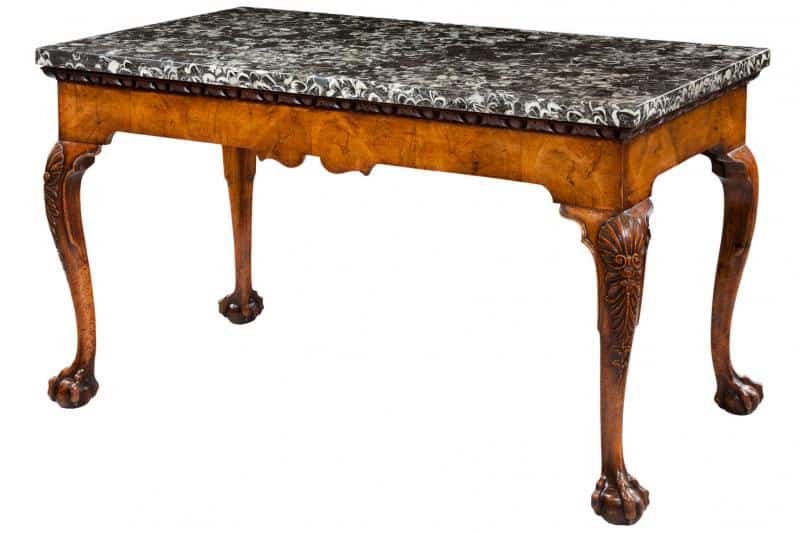
1800s
Writing tables began to become popular during the late 18th and early 19th centuries, during the Industrial Revolution.
These tables were plain and practical for the most part as they were used to complete invoices, accounts, or letters. Some rich households had writing tables exclusively for writing, but most would use them for many purposes, such as a dining table.
Library tables then developed during the late 19th century from the writing table and were so named for their position within the house: the gentleman’s study, where he would conduct business, do his accounts, and store his books.
These tables varied in style and design from simple rectangular wood tables with brass castors and tapered legs to the leather-top library table that was made from mahogany, had a leather writing top and was decorated with ornate details.
An iconic example of a Victorian writing desk is one that belonged to famous author Charles Dickens. You can see a close-up video of it here.
How to Identify an Antique Library Table
Identifying an antique library table can be tricky as there are many imitations and reproductions on the market. Luckily, there are some simple ways to tell if antique tables are genuine or not, as per Love to Know Antiques:
Look for a Manufacturer’s Mark or Label
A piece of antique furniture usually has a mark or label showing who made the item, where and when it was made.
There were several well-known manufacturers of library tables during the 18th, 19th, and 20th centuries, including the Eagle Furniture Company, the Mersman Brothers, and the Wolverine Manufacturing Co.
If your library table is genuinely antique, it should have a manufacturer mark or label stuck somewhere out of the way. For example, you may find it stuck on the underside of the desk or in one of the drawers.
Each one of these manufacturers had their own label that they stuck on all furniture produced by them, so finding out who made the library table can a) help you identify the type of table it is, b) date the piece, and c) help you work out the potential value.
Look at the Style of the Table
The style of the table can tell you much about the period it was made. As noted above, the design of library and writing tables changed throughout time, as did the materials used to make them.
If you can identify the material and style of the library table, you are much more likely to accurately identify the era it was manufactured. There are three main styles you are most likely to find:
- Victorian – Victorian library tables tend to be made of rich materials such as leather and mahogany, have ornately carved legs, scrolled designs, and elaborate drawer handles. Some have pedestals for feet.
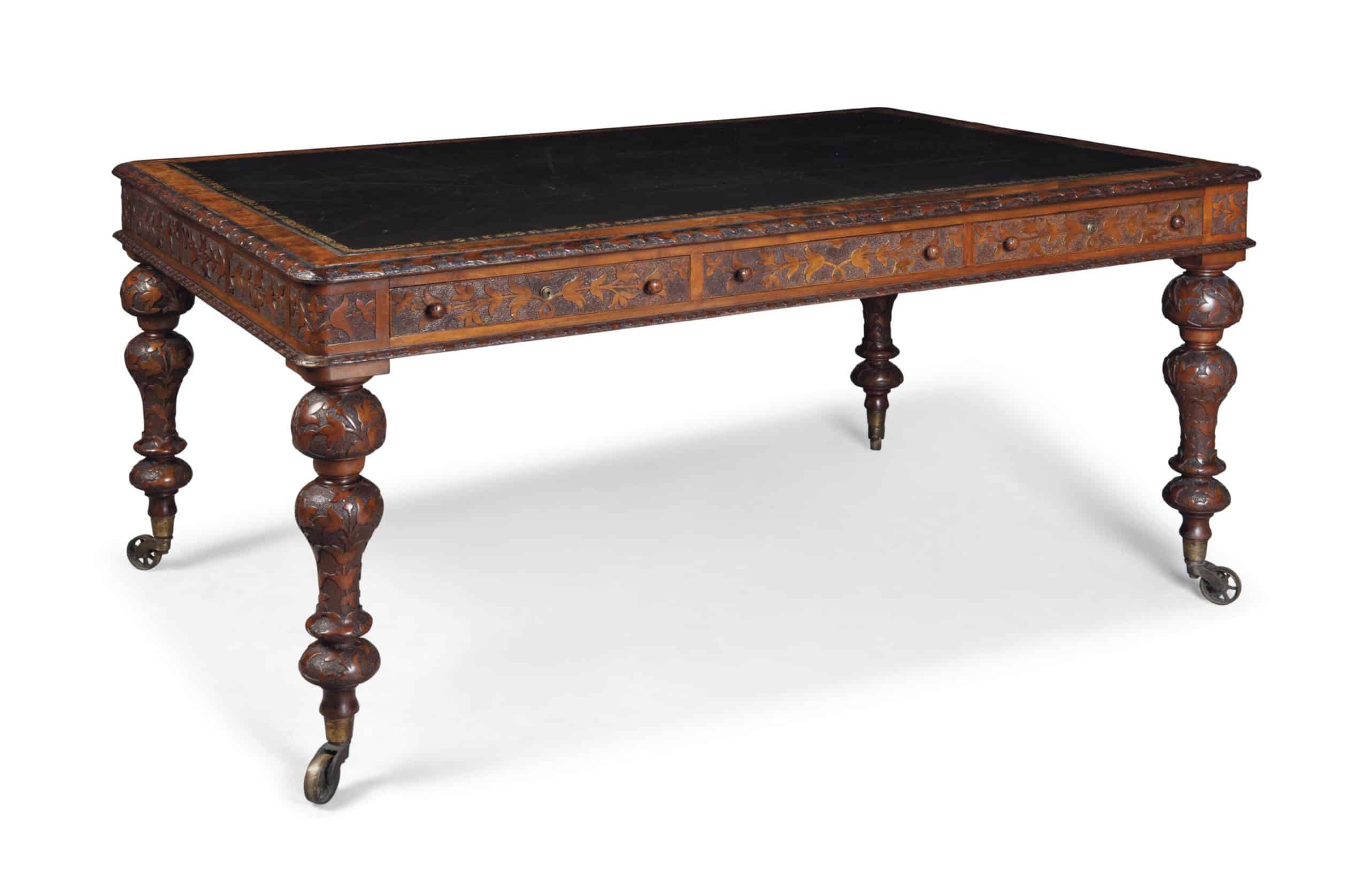
- Arts and Crafts – Arts and Crafts inspired tables tend to have straight lines, a sturdy design, and simple decorations. They are typically made from oak or mahogany.
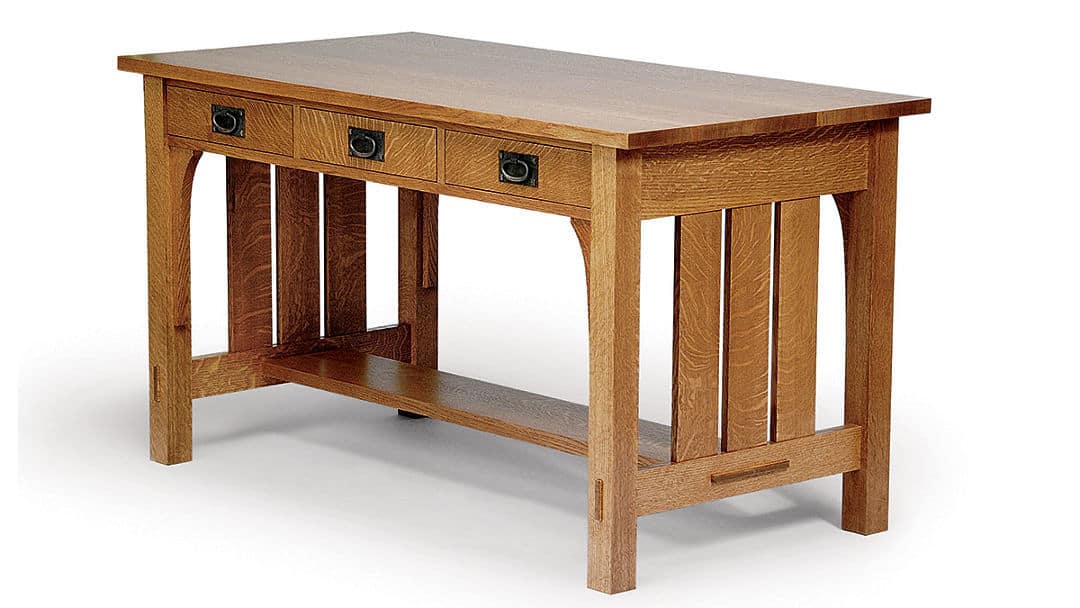
- Art Deco – Art Deco tables are inspired by geometric shapes and tend to be very simple in design. They are usually made from oak and maple.
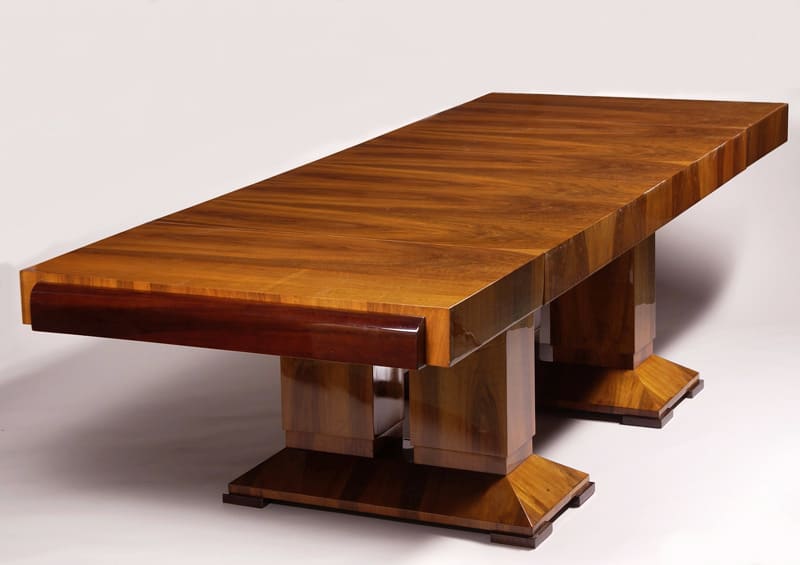
An example of identification using this method would be if you had a leather topped library table with elaborately carved embellishments:
The leather top automatically points to the Industrial Revolution era or later, and the carvings indicate a Victorian style. Therefore, it is most likely that the table was made in the early 19th century.
Get it Appraised Professionally
If you are still unsure about the era your library table originated from or cannot work out the style that is most likely to match up to the ones listed above, then it may be worth getting it professionally appraised.
The appraisal will tell you about the origin of the library table, along with an estimated valuation for you to use for future reference.
This can be done via free valuation websites (though you must ensure that the website is legitimate and that there are no hidden costs), or alternatively you can request an in-person appraisal. This may not be free, so check before you book.
Other alternatives include taking it to your nearest antique dealer or a professional appraiser who is highly knowledgeable in the subject and allow them to research and come back with a more accurate estimate than the websites may have.
This also may cost money, but it depends on where you go and how professionally you wish for it to be appraised. Insurance companies may also offer some form of appraisal in order to provide an insurance quote down the line.
Values of Antique Library Tables
The value of antique library tables varies depending on different factors such as condition, age, whether it is a collectible item, the material is it made from, and who made it. They tend to be durable and are a popular item to decorate modern households.
Many antique library tables currently on the market originate from France, as many were made in the country during the 16th and 17th centuries. Lyon was especially known for their manufacturers during these eras and has produced many fine examples of library tables.
These French library tables are being sold from anywhere between £390 to over £10000. The price point reflects the material used to make it, its condition, the size and width of the table, and the manufacturer.
Others are made in a French ‘Louis XIV’ style, which consists of fine material such as mahogany and elaborate, intricate embellishments of gilt and brass. These tables can sell for anywhere between £1500 to tens of thousands depending on condition.
Other popular types of antique library tables include Victorian library tables and Georgian library tables. We will use the items listed on the website Selling Antiques to base the estimated price points on.
Georgian Library Tables
Georgian library tables can sell for anywhere between £200 to £40000 depending on where you purchase them from and the quality of the item.
The least expensive library table listed on the site is £850 and is made from rosewood with a simple carved design. It is a William IV library table and was made around 1830. The table is said to be in good condition, with the wood professionally polished and waxed.
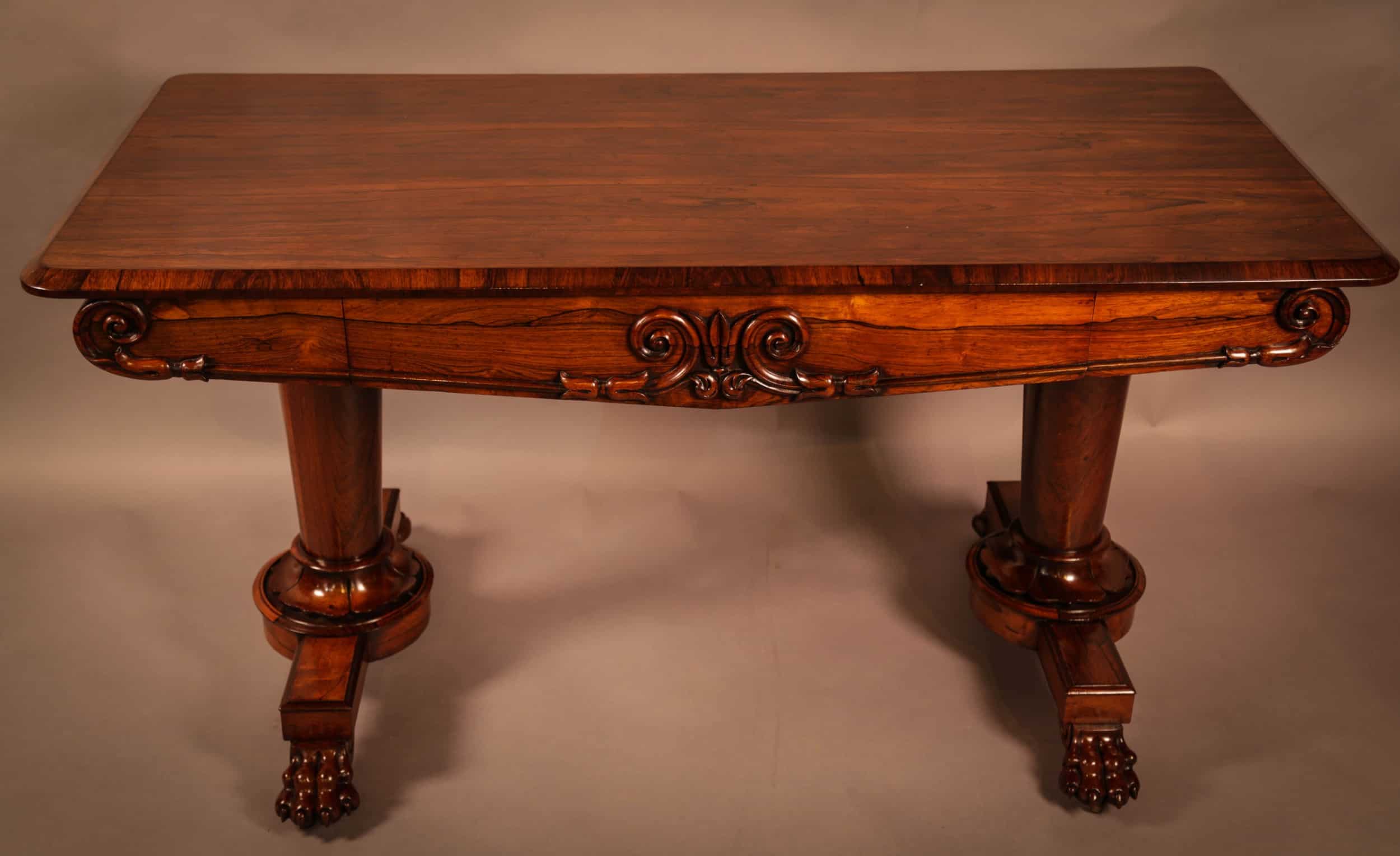
The most expensive Georgian table on the site is £24000. It is a mahogany and leather library table made during the reign of George III, just before the Regency era. The expense of the item is justified by the rich materials, the excellent condition, and the unique design.
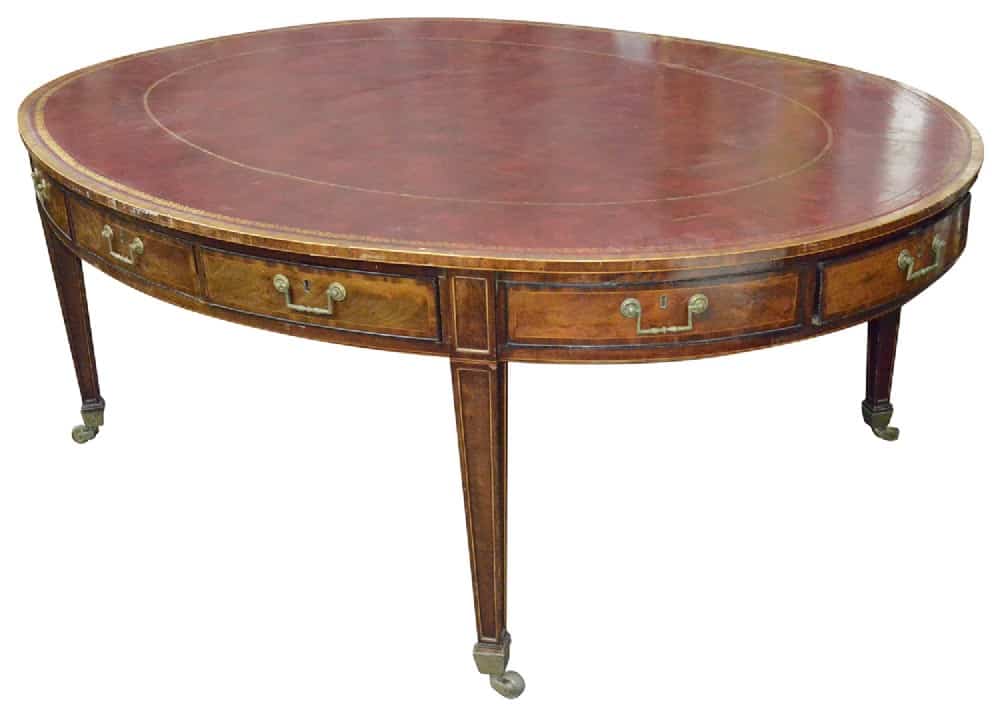
Victorian Library Tables
Victorian library tables tend to sell between £250 to £35000, again depending on the style, material, and quality of the piece. Selling Antiques has many Victorian library tables, and they range from £575 to £6850.
The former is a small mahogany table with curved legs and a leather writing top. There are two drawers for storage, as well as two false drawers for decorative purposes. The condition of the table is listed as good with age related wear.
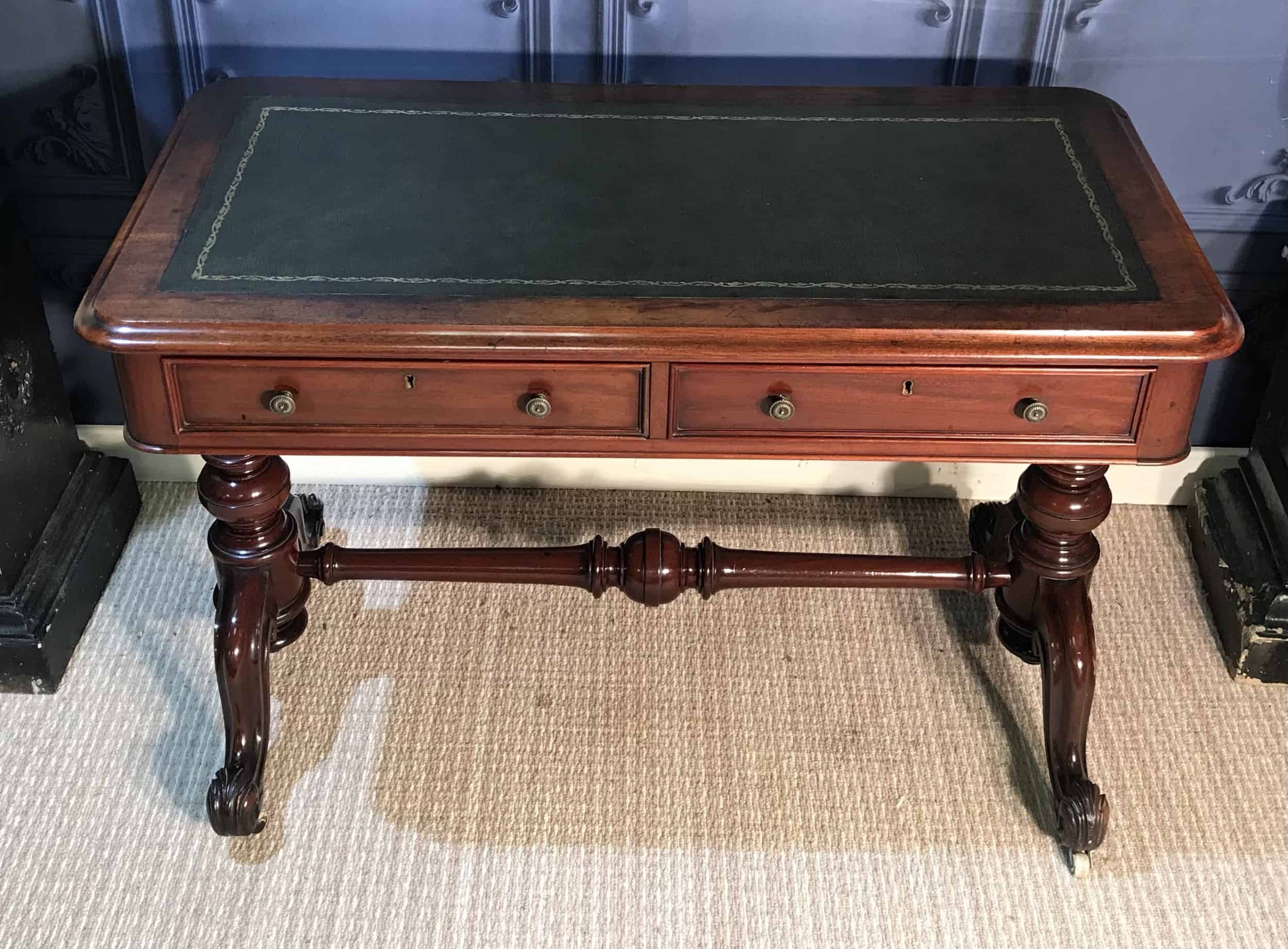
The latter table is a large library table again made from mahogany, but the size of it means it can double as a dining table. It can seat eight people, has a simply designed tabletop resting on brass and ceramic castors, and has a pristine finish.
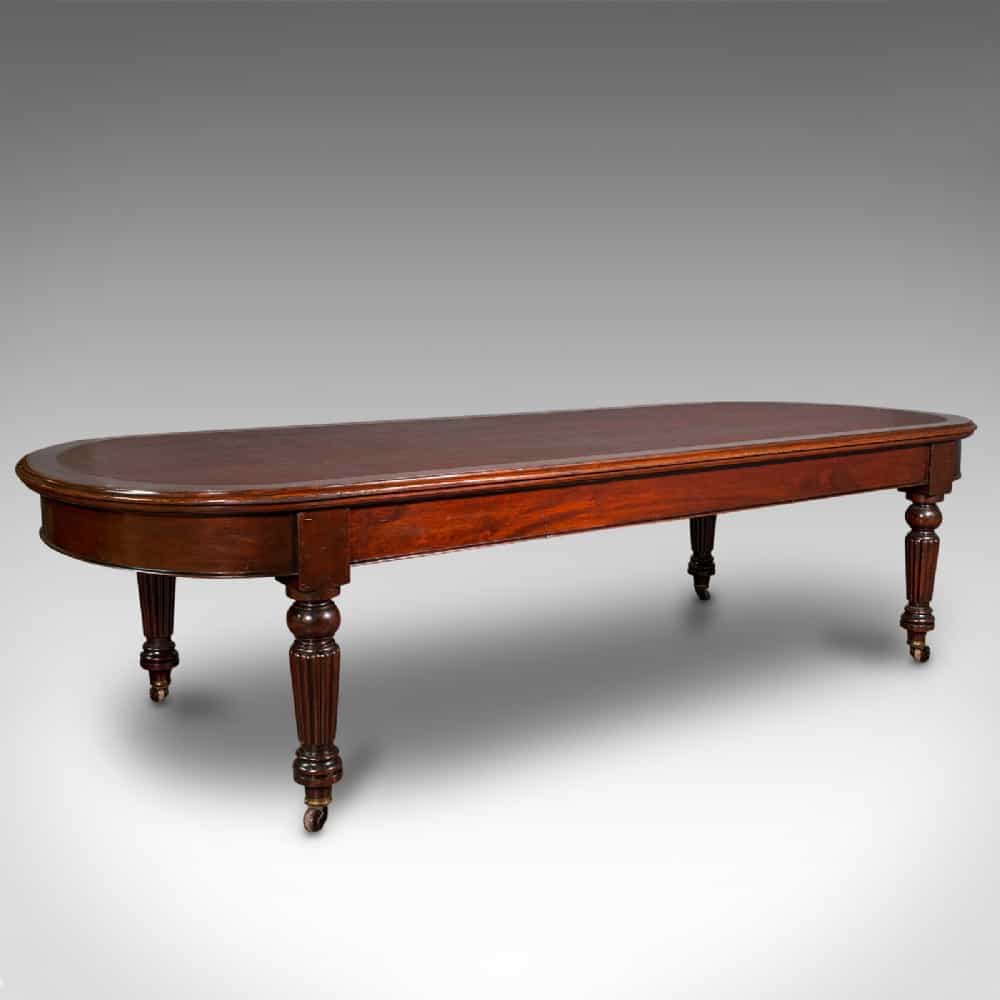
Where to Buy Antique Library Tables
Antique dealers and shops
There are many places where you can buy an antique library table that suits your preferences and needs. The first is from an antique dealer, who may be found in your local antique shop.
Antique dealers and shops vary with what they have in stock, so it is always worth going many times to see if they have added anything that takes your fancy. You may find that you get a bargain depending on the popularity of library tables in your area.
Online Antique Store
The second is from an online antique store, such as Selling Antiques which is linked above. They have procedures in place to ensure that no item is sold under false pretences and have valued the item before listing it to sell.
Another online platform you may be able to buy one from is eBay. This website allows both offers and set prices for items, so you could get your desired library table for less than anticipated.
Be aware that sellers on eBay are usually not professionals and may not have valued the item correctly, or even properly identified it. Always check for authenticity before making the purchase.
Social Media Platform
Finally, you might find an antique library table on a social media platform, such as the Facebook Marketplace. Much like eBay, these sellers aren’t professionals, so again you must be sure of the legitimacy of the item before giving out any personal information.
Conclusion
In summary, to identify whether or not a library table is a genuine antique, you can:
- Check for a manufacturer’s mark or label.
- Research the style of the table and match up the characteristics of it to the one that fits best.
- Use the style to determine the era it was most likely made.
- Take it to a professional appraiser or have it appraised online by a reputable website or company for a more accurate identification.
Hopefully, you have found this article useful in your endeavour to identify and value an antique library table. If you have any questions or remarks, please let us know in the comments and we will reply to you as soon as possible. We look forward to hearing from you!
